
Hey everybody,
Quick update: I’ve been thinking about the best way to describe the long-term vision for my online course, Write of Passage.
This morning, I had an epiphany. Along with my business parter Tiago Forte, we’re building a Y-Combinator for online writers.
Here’s what we already do:
Teach students to build a personal brand.
Introduce them to other aspiring writers.
Give students the tools to publish consistently.
Long term, we hope to guarantee audience growth for new writers. Like many online businesses, there are increasing returns to scale and we plan to teach 1,000 people to write this year.
Later this summer, we will also offer an online version of our live writing workshop to existing Write of Passage and Building a Second Brain students. Using Zoom, we will re-create the creative energy of modern writing groups and Paris coffee shops in the early 20th century. By doing so, we’ll de-mistify the writing process, help writers come up with interesting ideas, and build a global community of ambitious online writers.
I can’t wait.
Learn Like an Athlete
LeBron James didn’t always have thick calves, a raging six-pack, and arms like the Incredible Hulk.
Ask LeBron about his off-season training regimen, and he’ll share a detailed run-down of his workout plan and on-the-court practice routine. When he entered the NBA, LeBron wasn’t a strong shooter. I’d bet the house that early in his career, LeBron built his off-season training regimen around his weak jump shot and disappointing 42% field goal percentage during his rookie season. As his Instagram posts reveal, LeBron worked for his strength, agility, impeccable history of injury avoidance, and an outstanding 54% field goal percentage during his 14th NBA season.
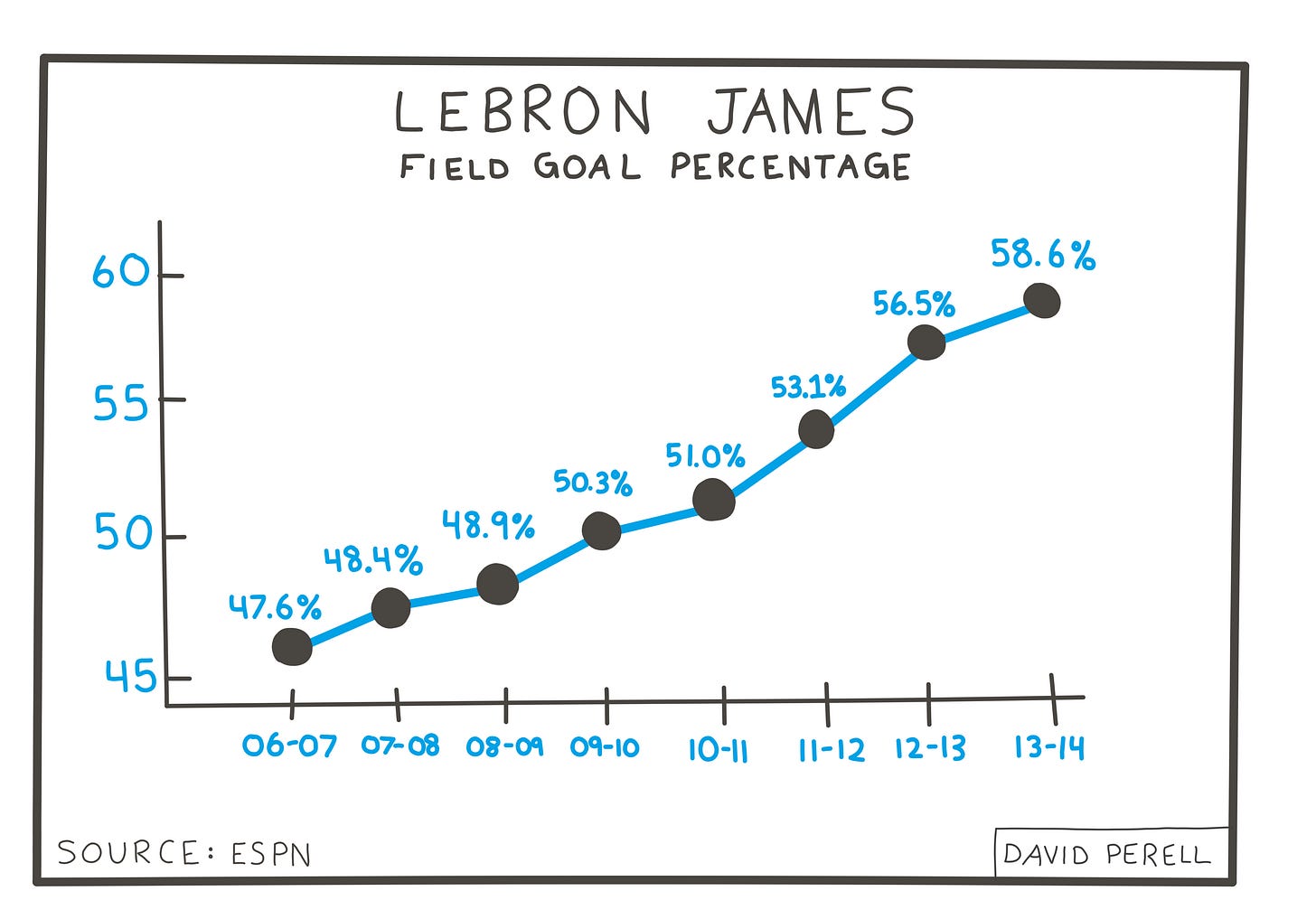
Athletes train. Musicians train. Performers train. But knowledge workers don’t.
Knowledge workers should train like LeBron, and implement strict “learning plans.” To be sure, intellectual life is different from basketball. Success is harder to measure and the metrics for improvement aren’t quite as clear. Even then, there’s a lot to learn from the way top athletes train. They are clear in their objectives and deliberate in their pursuit of improvement.
Knowledge workers should imitate them.
— —
What Does a Learning Plan Look Like?
Similar to how LeBron structures his training to win NBA championships, knowledge workers should train to build skills, complete projects, and increase their productive power. Armed with an effective system, we’ll learn faster and have more fun doing it.
My friend Nick Maggiulli is a case study in building a learning plan.
In 2015, he decided to learn a programming language called R. Two years later, he was a data science expert. That new skill propelled Nick into his next long-term endeavor, a personal blog. Nick started writing a blog post every Tuesday, starting on January 1st, 2017. Fast forward to today, and he’s now published a post every week for the past 131 weeks. Despite his success, his pursuit of knowledge is relentless. Last time I visited his apartment, I saw an 850-page book about tax law on his living room table. He plans to devote the next year to study the American tax code, so he can know as much about tax law as anybody at his company.
Nick should serve as a role model for all of us.
Even among the most ambitious individuals, learning plans are rare. Most people are reactive. They don’t plan. Like surfers in a violent ocean, they surrender to their environment. They direct their attention towards the never-ending shouts of email newsletters, friend recommendations, and social media feeds.
We can do better.
— —
What Should You Do?
Learn in three-month sprints. Commit to a new learning project every quarter. Even the longest projects are simply a collection of short term tasks. Knowing that, you should break down the project into daily increments, and create a series of daily and weekly goals to learn the skills required to complete the project on time.
The end goal should be clear. Start by writing down a positive vision for your future. Focus on the end goal, not the skill itself. For example, rather than saying “I want to learn how to draw,” I focused on the end goal: “moving forward, all the charts, graphs, and images on my website will be hand-drawn.”
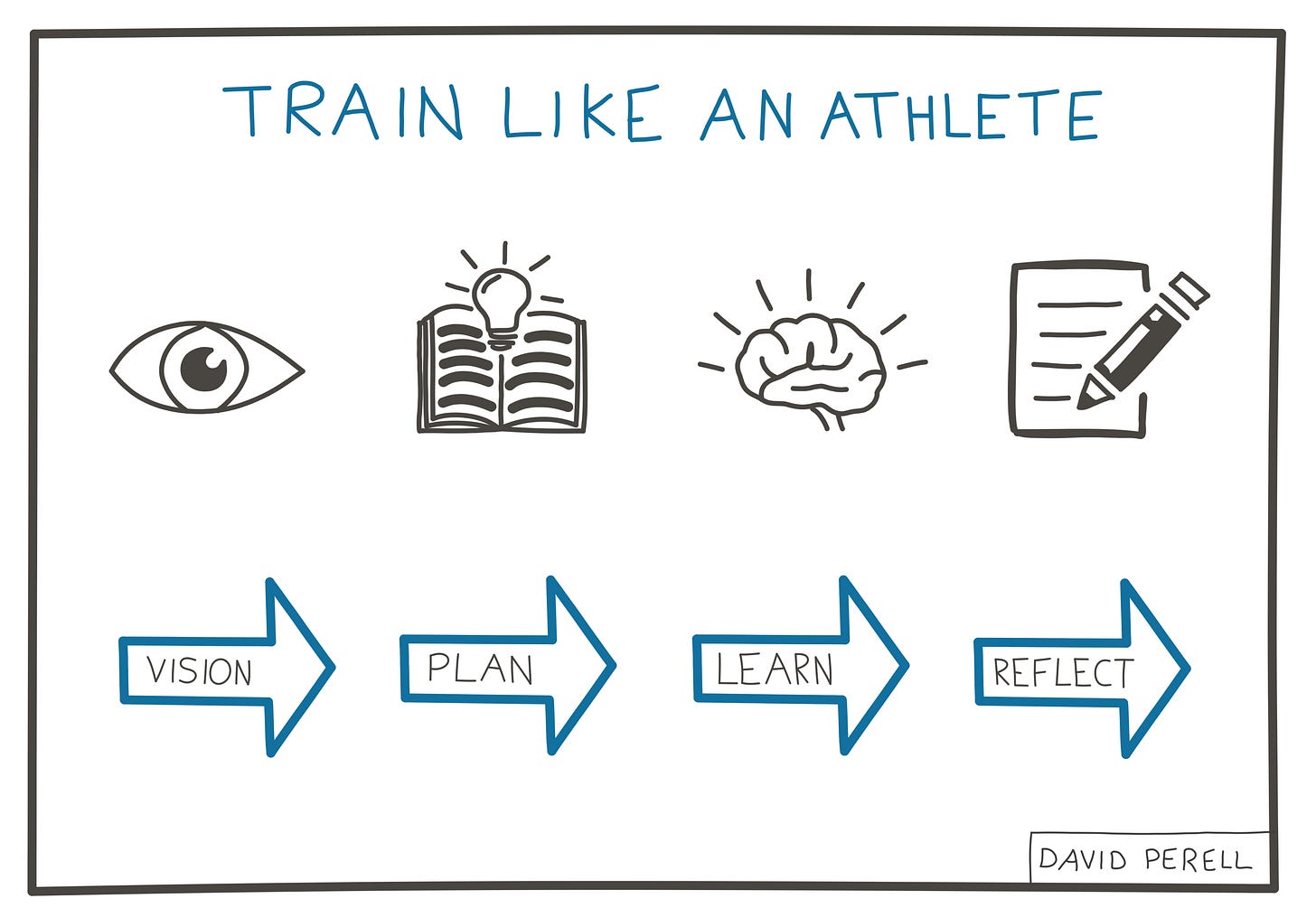
I like Daniel Gross’ framework for learning. When I interviewed him, he told me to build a video game for myself. Like a video game, productive projects have multiple levels. They follow the Goldilocks Principle: not too easy, not too hard. The learning project needs to be challenging enough to demand focus, but easy enough to make consistent progress. That way, you can enter the optimal state of learning.
If you get stuck, the “video game” is too hard. When this happens, you should stop. Work on a smaller step or retreat to a manageable challenge. Otherwise, you will lose your motivation to continue learning. Conversely, if you’re bored, the video game isn’t difficult enough, so you should attempt a tougher challenge that you haven’t seen before.
Everybody loves novelty. Even if your learning plan bounded by a strict goal, the details should be flexible. The activities should be cohesive enough to keep on track, but diverse enough to stay interesting. For example, if you want to learn about the Space Race between America and the Soviet Union, you can read books, watch documentaries, listen to podcasts with astronauts, and explore newspaper articles from the time-period. Choose what excites you, as long as it serves the end goal.
— —
Learn Like an Athlete
The more you learn, the easier it is to learn. Pick the right projects, and you’ll develop a personal network effect, where each new skill increases the value of skills you already have.
You’ll improve your process every time you complete a learning challenge. By pushing through the cycle of start to finish, you’ll discover quirks about yourself, accelerate your learning process, and ultimately, learn like an athlete.
Note: I’ve created a template to help you learn like an athlete. You can download it here.
Fresh Ideas
New Article: The Paradox of Ambition
Last month, I spent a week in Silicon Valley. Besides walking around the city, I met with multiple founders, CEOs and investors.
I’ve said it once and I’ll say it again: Silicon Valley isn’t just a place. It’s an intellectual movement.
The culture is designed to build big-time companies, and we should all learn from it.
— —
New Podcast: Mason Hartman
For years, I’ve admired Mason's perspectives on the culture, childhood, and the education system.
We recorded this episode in Los Angeles, where Mason works at a school for gifted children and does most of her research. In this episode, we chat about all things education early childhood development, the road to college, and why childhood has become a full time job. Then we close the episode with lessons from two of Mason's favorite people, David Deutsch and Patrick Collison.
I hope you enjoy this episode.
Listen Here: iTunes | Overcast | Website
— —
Blog Recommendation: Sid Jha
My assistant, Sid Jha is an absolute rockstar. He works on every podcast and manages my online course.
He recently launched an email newsletter. Now, he’s leveling up. Inspired by Write of Passage, he plans to publish a blog post every day for 60 days. I particularly enjoyed this article about Greg Popovich, the legendary basketball coach.
Keep an eye on Sid and check out his writing.
Coolest Things I Learned This Week
Library Way in New York
Snapped this photo in front of the New York Public Library on 42nd street on Saturday.
“Some books are to be tasted, others to be swallowed, and some few to be chewed and digested.”
Phenomenal.

So Simple. So Profound.
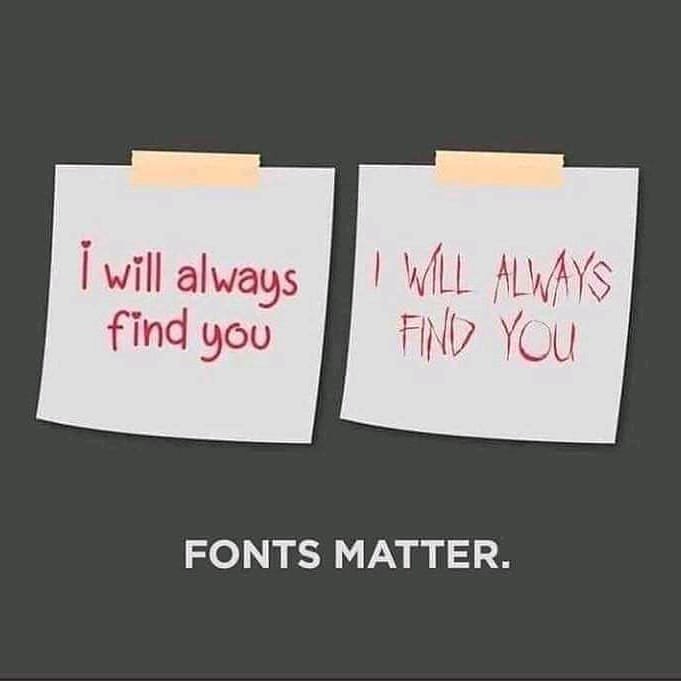
Who Can Predict the Future?
From Range by David Epstein:
"The average expert was a horrific forecaster.
Their area of specialty, years of experience, academic degrees, and even (for some) access to classified information made no difference. They were bad at short-term forecasting, bad at long-term forecasting, and bad at forecasting in every domain. When experts declared that some future event was impossible or nearly impossible, it nonetheless occurred 15 percent of the time. When they declared a sure thing, it failed to transpire more than one-quarter of the time.
The Danish proverb that warns “It is difficult to make predictions, especially about the future,” was right.”
Hallgrimskirkja Church in Iceland is Magnificent




Photos from Shopping Malls in the 1980s
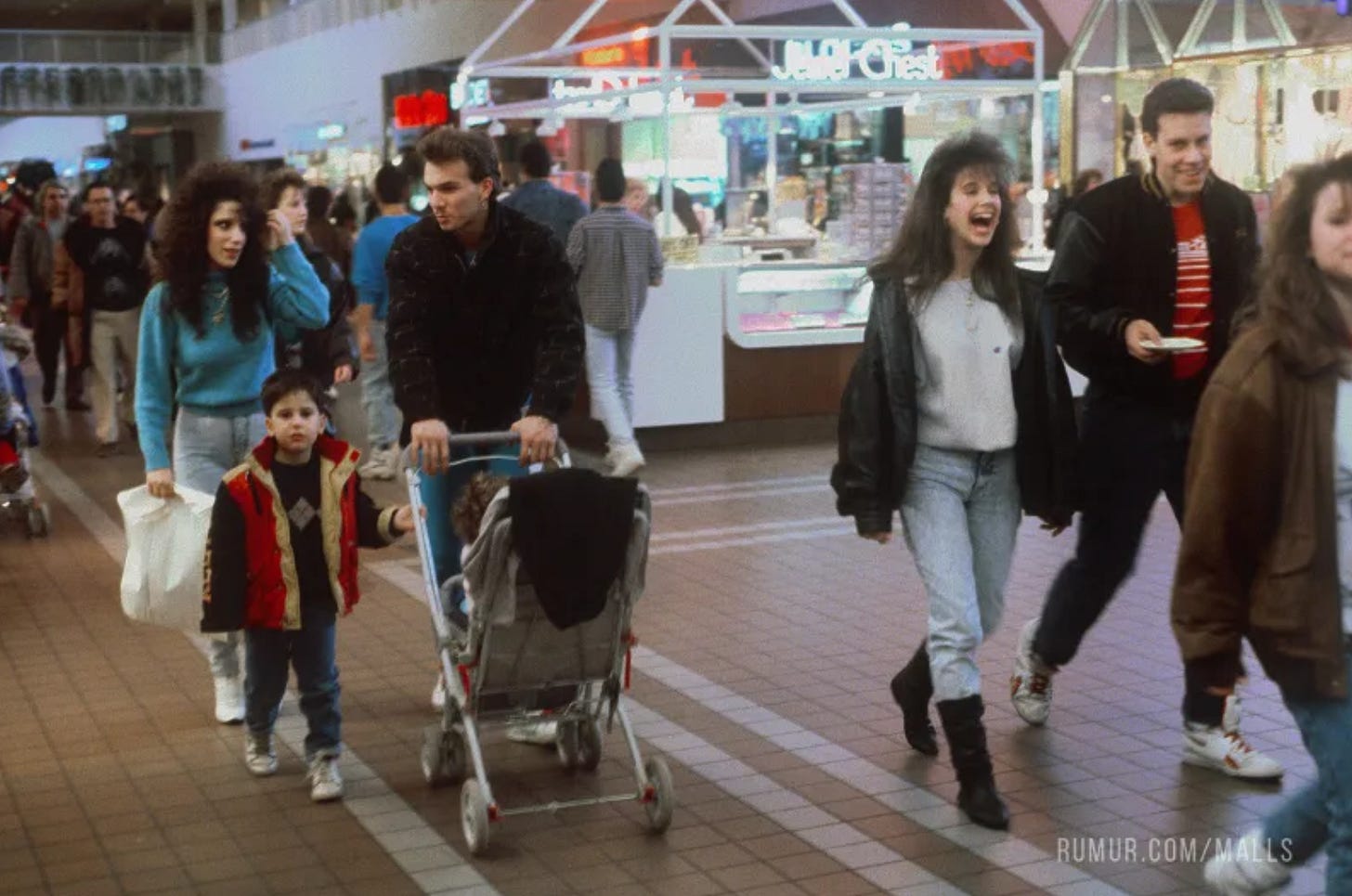

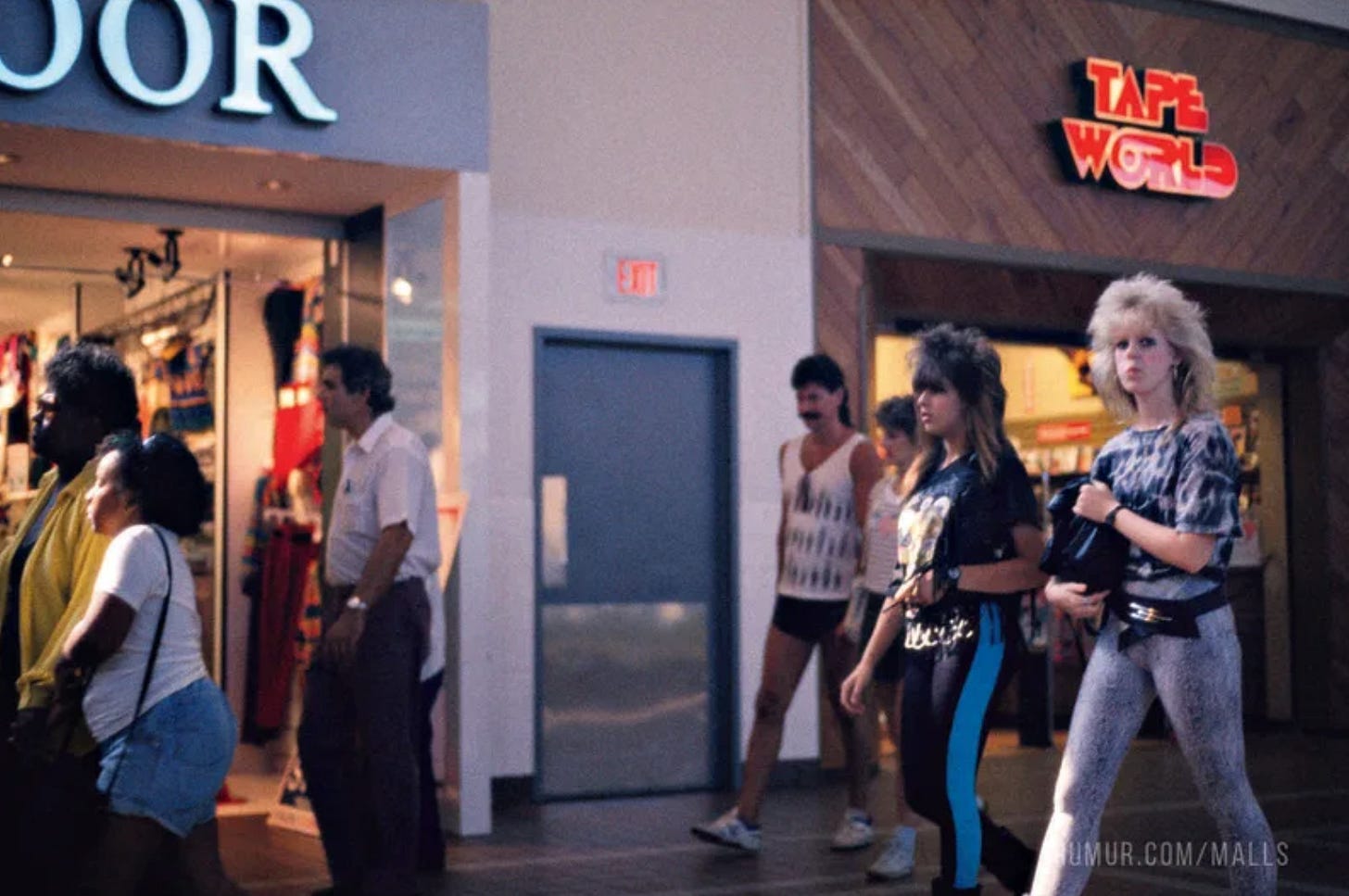
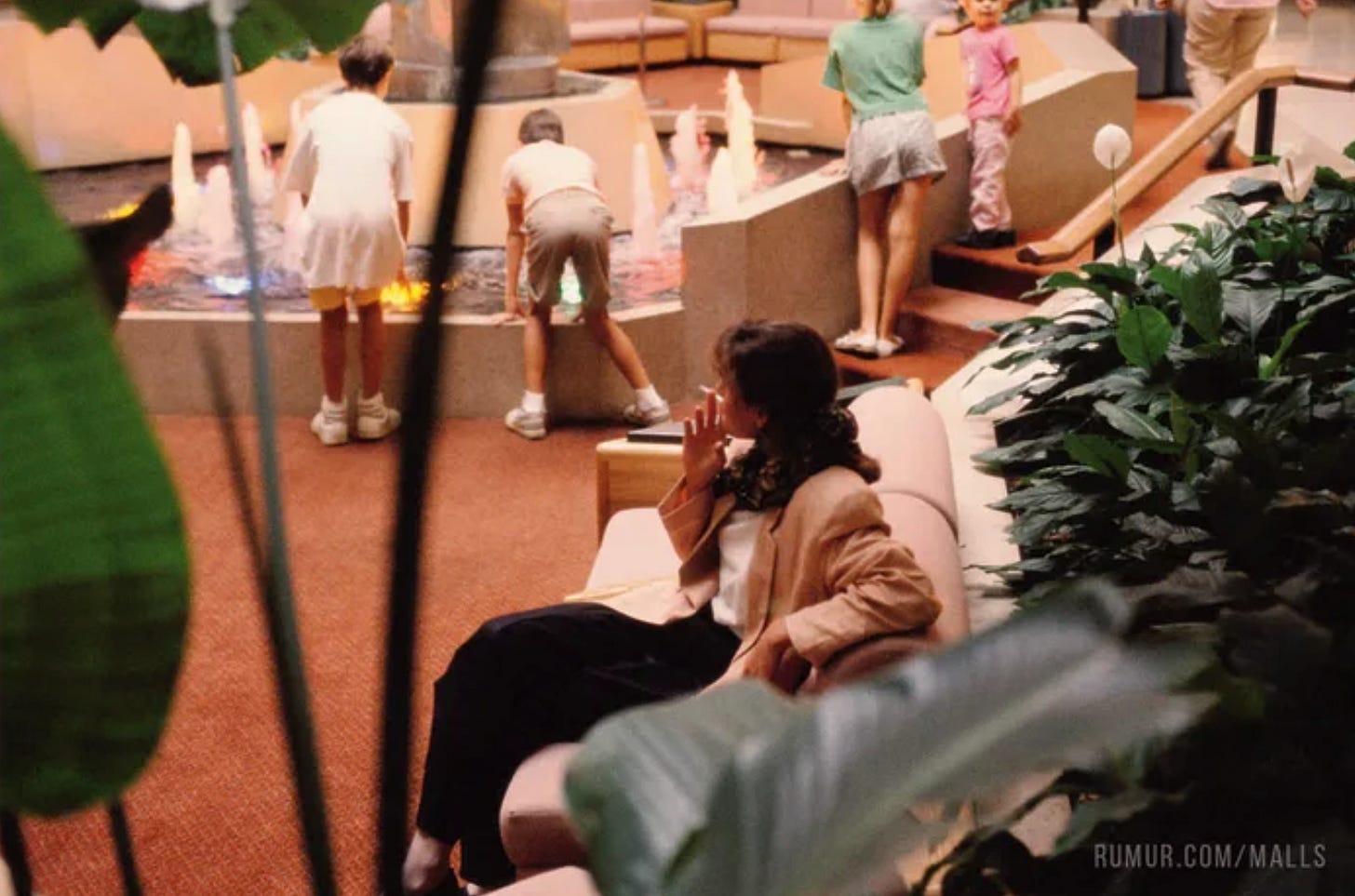

Bike Parking
The fietsvlonder is a “bike platform” that temporarily swaps one car parking space for 10 bicycles.
If deemed a success, the curb is permanently adjusted, and the structure is moved to the next location.


Photo of the Week
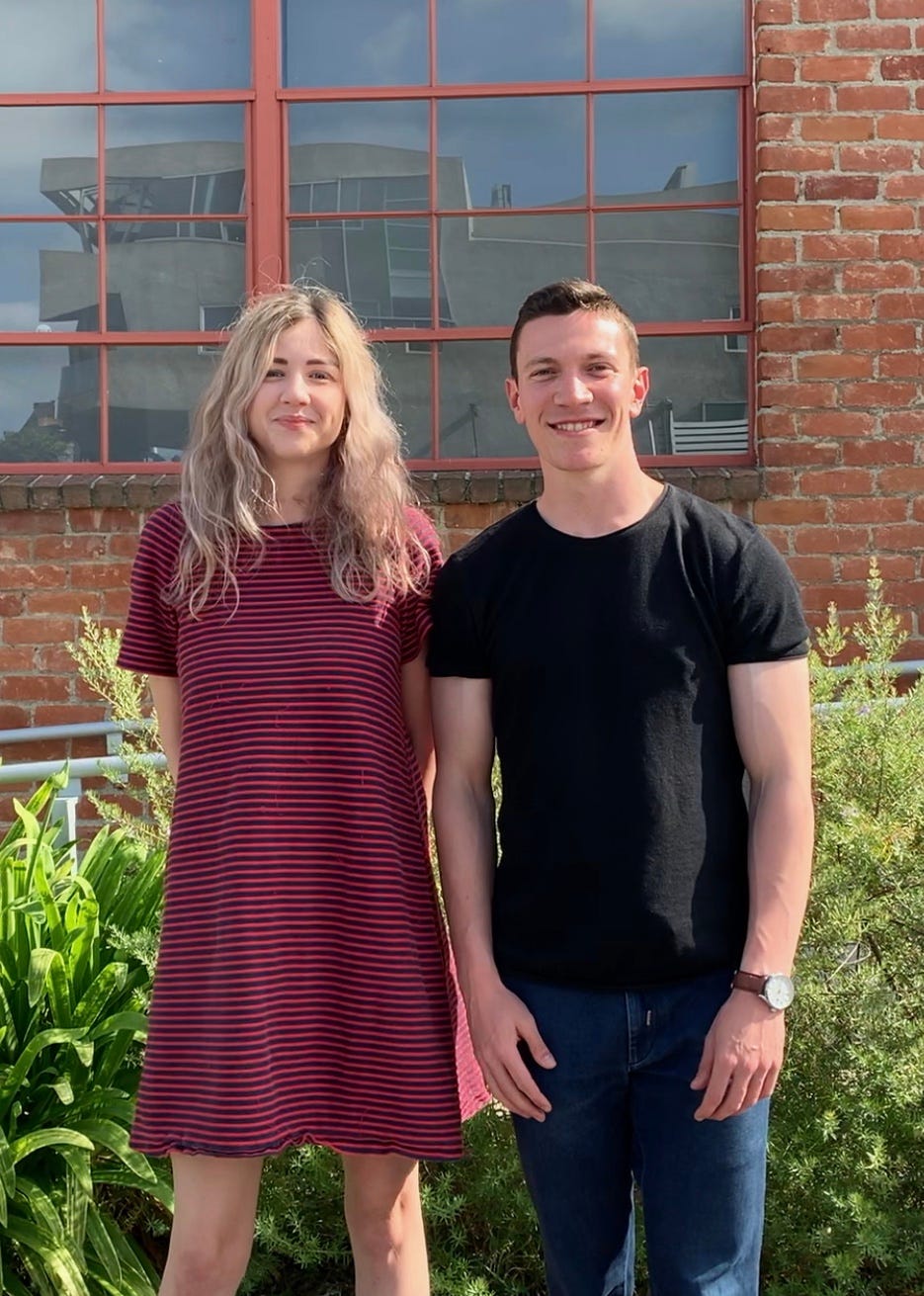
Snapped this photo with Mason Hartman in Los Angeles after we recorded our podcast.
Mason has more original ideas than just about anybody I know. She’s not bogged down by conventional ways of thinking about psychology and childhood education, which made for a great podcast. I particularly enjoyed hearing about the week she spent with David Deutsch in Oxford.
Enjoy the episode and let me know what sticks out to you.
Until next week,
David Perell

